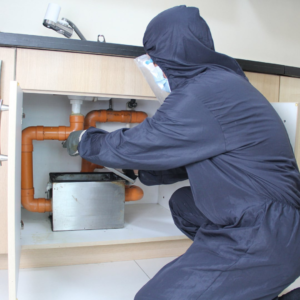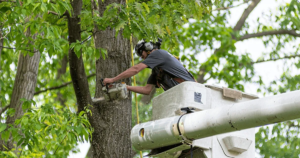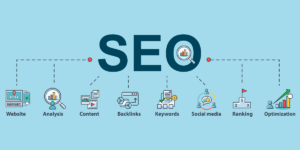Articles are a great way to show expertise in your field, drive traffic to a page and convert customers.
Accurate identification of pests is essential before any control measures can be taken. This can be done through scouting or monitoring. Identifying pests can also help you decide what control measure to use. Click Pest Control Quincy to learn more.

A pest control program based on preventative tactics can lower the likelihood of more drastic and frequent reactive treatments. This is because preventative strategies are intended to address the possibility of pest problems before they arise rather than taking care of a problem after an infestation has already occurred. This strategy entails routine maintenance and inspections to identify and seal areas that might be vulnerable to pest infestations. This can include caulking openings, modifying the landscape to avoid insect nesting sites and keeping food scraps and litter sealed in containers or disposed of frequently.
Preventative pest management programs are the ideal approach to pest management. They can dramatically reduce the need for costly and hazardous chemicals, while also supporting environmentally conscious and responsible methods of pest control. Preventative pest control strategies are most effective when a thorough understanding of pest behavior, regular property inspections and prompt implementation are employed.
Pests are attracted to food processing environments primarily for water, food and shelter. Their presence can lead to contamination of the food products with bacteria and other disease-causing agents (e.g. microbial pathogens and intestinal worms), physical damage to the product and its packaging, and direct damage to the facility.
A key component of any pest prevention program is to educate employees. Employees can carry pests into work areas on their clothing and personal belongings, or introduce them through unsanitary handling of food, beverage or plant material.
An education program can include training in hygienical practices, such as washing hands before touching food and cleaning utensils after using them. It can also include an instruction on proper garbage disposal techniques. This will reduce the potential for pests to enter a building through drains and sewer systems.
In addition, pests are attracted to moist areas. This can be addressed by ensuring that drainage systems are functioning properly and by repairing any leaks or cracks. Dehumidifiers can also be used to reduce moisture levels in crawl spaces and basements.
The most important step is to be sure that a pest has actually been identified. This is especially important for biological control programs where a pest’s natural enemies (parasites, predators and pathogens) can be introduced to the environment to control its population without the use of chemicals.
Suppression
Pests are organisms that damage or spoil food, crops or property. Pest problems are usually serious enough to require action. Pest control aims to reduce pest numbers to an acceptable level and cause as little harm as possible to non-target organisms. Control measures are usually a combination of prevention, suppression and eradication. Prevention is the most desirable method of control, but it is not always feasible in outdoor situations where pests are primarily found. Suppression and eradication are more common methods of control in indoor areas, where it is easier to prevent pests from entering.
Pest problems are most serious in food processing environments, where they can cause economic injury by directly damaging or contaminating food, destroying equipment, and reducing productivity. Insects, rodents and birds cause billions of dollars in losses in stored food each year. Other pests such as flies, fleas and mosquitoes can transmit disease.
Monitoring, scouting and identifying pests are important steps in the process of managing pests. These activities are the basis of IPM, which is a comprehensive pest management approach that involves combining physical, cultural and biological controls with chemical interventions when necessary.
Preventive pest control strategies are generally more cost effective than reactive ones. However, some pests may be present at unacceptable levels even with preventive controls. These pests are referred to as nuisance pests. Generally, it is more cost-effective to accept a certain level of pest damage and focus control efforts on the most troublesome pests.
Many pests are a continuous problem and must be controlled regularly, such as cockroaches, termites and mosquitoes. Others are sporadic and only need to be controlled periodically, such as gypsy moths and Mediterranean fruit flies. Some pests are a threat to public health and may need to be controlled immediately, such as the plague bacterium and cholera bacteria.
Natural enemies, such as predators and parasitoids, can help to manage pest populations. These organisms can be purchased and released into an environment in small batches or in a single large release, depending on the situation. Biological control can be combined with other management techniques, such as using pheromones to lure insects, releasing predatory mites that attack aphids or using sterile insect ova, which produce an insecticidal protein that kills the pest.
Eradication
Pests cause damage to buildings, contaminate food and pose a health threat. Many pests can be controlled with a range of methods, which are specific to the type of pest. Some are more effective than others. For example, baiting is better for rodents than trapping. Various methods can also be used to control insects such as flies and cockroaches. Some pests are even capable of transmitting disease. It is for this reason that pest control should be carried out by experienced and qualified professionals.
There are several legal requirements that businesses must comply with when it comes to pest control. These include the Food Safety Act 1990 and the Health and Safety at Work etc. Act 1974. These laws prevent the spread of diseases caused by pests and ensure that pests are dealt with to the highest standards.
The most common way to deal with pest problems is to prevent them from occurring in the first place. This can be done by sealing entry points to the building and using a good cleaning regime. For example, a regularly-used kitchen should be cleaned thoroughly, and dirty floors and surfaces should be mopped with a disinfectant cleaner. This will stop the buildup of grease and other materials that attract pests. It is also important to keep the bathroom clean and dry to prevent pests from making it their home.
Other preventive measures include installing insect screens on doors and windows, keeping plants away from the building, and putting down barriers such as rock salt to deter pests. For larger sites, the use of a professional pest control service can be beneficial. This can help to prevent pest infestations before they get out of hand, and may include the use of nematodes to control soil-borne insects such as fleas, grubs, worms, and slugs. These microscopic worms are helpful because they kill their prey by injecting them with poisonous bacteria.
Other pest control services include fumigation, the tenting of a building to release gasses that destroy pests. This is typically used in very severe cases. It is essential that any company using pesticides carries out thorough checks and documentation to avoid contamination or other environmental issues. For example, the name and EPA registration number of any chemical used should be recorded. Also, it is vital to read the label of any product to understand how it should be used. This information will be useful if you need to contact the manufacturer with any questions or concerns.
Monitoring
A pest control program must be regularly monitored to ensure that it is effective. This monitoring can be done through a variety of methods, depending on the pest type and the environment in which it is found. Some examples of monitoring include: scouting, trapping, and baiting. Monitoring should also take into account the effects of environmental conditions on pest populations, such as temperature and moisture levels.
It is important for businesses to hire experienced pest control professionals to perform their pest management activities. These experts know how to find indicators of pest presence and can quickly determine the type of unwanted organisms that are present. They are also well-versed in different pest control methods, including physical and chemical treatments.
In addition to being trained to use the appropriate pest control methods, pest control professionals must have good communication skills. This is essential because they are responsible for communicating the results of their work to other people, including clients and supervisors.
Pest control involves a number of different techniques to manage pests, such as chemicals, biological methods (using natural predators and pathogens), physical methods (traps and barriers), and cultural methods (modifying the environment). Each method has its own advantages and disadvantages. For example, some chemicals are more toxic than others, while physical methods can be time-consuming and labor-intensive.
Food manufacturers must use a qualified pest control contractor or employ their own pest control team to conduct regular inspections and take actions to prevent the growth of pests in their factory environments. In some cases, this is required by law in order to ensure that the health and safety of employees, customers, and the public is protected.
Managing pests in food processing facilities is challenging, especially in the context of strict hygiene standards and limited space. In order to reduce the risk of pests, all potential breeding sites and hiding places must be eliminated. The facility should be designed to minimize pest harborage and to allow for adequate ventilation, and raw materials must be sourced from clean, reputable suppliers. In addition, a pest sightings log should be maintained to record any observations.








